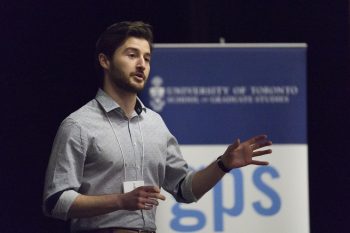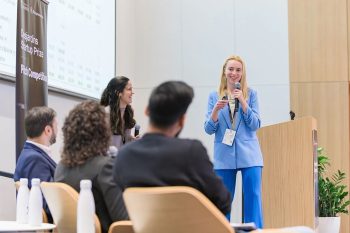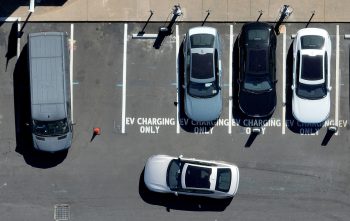Six U of T Engineering professors have received Early Researcher Awards (ERA) from the Government of Ontario. The ERAs provide critical support that helps promising scientists and engineers in the first five years of their academic careers build their research teams.
“Our stellar early-career professors are already making outstanding contributions to their fields, from sustainability to biomedical engineering,” said Cristina Amon, Dean of the Faculty of Applied Science & Engineering. “These awards recognize that excellence, and enable them to grow their research programs to address some the world’s most relevant challenges. On behalf of the Faculty, my warmest congratulations to all of them on this well-deserved honour and my thanks to the Government of Ontario for its commitment to nurturing the next generation of engineering research leaders.”
Learn more about the U of T Engineering professors who received the awards:
Nanomaterials for smooth operation
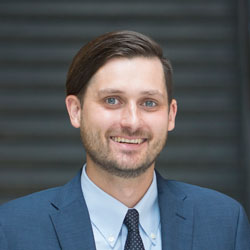 Professor Tobin Filleter (MIE) studies how nanomaterials — including recently discovered 2D materials such as graphene and graphene oxide — could help reduce damage caused by friction, wear, and fracture in mechanical structures and systems. His work could lead to new lubricants, coatings, or composites that extend the life of automobiles, aircraft, batteries and even space systems.
Professor Tobin Filleter (MIE) studies how nanomaterials — including recently discovered 2D materials such as graphene and graphene oxide — could help reduce damage caused by friction, wear, and fracture in mechanical structures and systems. His work could lead to new lubricants, coatings, or composites that extend the life of automobiles, aircraft, batteries and even space systems.
Modelling muscles
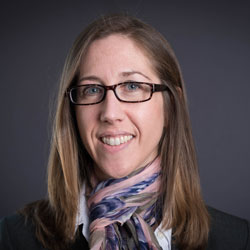 Muscle wasting, whether through aging or disease, is a major health concern. Professor Penney Gilbert (IBBME) and her team decipher the cues that “wake up” muscle stem cells and direct them to repair skeletal muscle damage. These studies not only provide insight how the body generates muscle, they can also inform the development of new drugs, therapies or treatments that prevent or repair the damage caused by muscle wasting.
Muscle wasting, whether through aging or disease, is a major health concern. Professor Penney Gilbert (IBBME) and her team decipher the cues that “wake up” muscle stem cells and direct them to repair skeletal muscle damage. These studies not only provide insight how the body generates muscle, they can also inform the development of new drugs, therapies or treatments that prevent or repair the damage caused by muscle wasting.
Designing smart materials
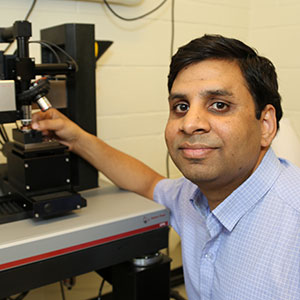 Professor Chandra Veer Singh (MSE) and his team design materials at the nanometre scale. Examples include strong yet lightweight materials that could reduce weight and improve fuel efficiency in automobiles and aircraft, and catalytic materials which facilitate chemical reactions to convert CO2 into useful chemical fuels, such as methanol, using sunlight.
Professor Chandra Veer Singh (MSE) and his team design materials at the nanometre scale. Examples include strong yet lightweight materials that could reduce weight and improve fuel efficiency in automobiles and aircraft, and catalytic materials which facilitate chemical reactions to convert CO2 into useful chemical fuels, such as methanol, using sunlight.
Cleaner, greener combustion
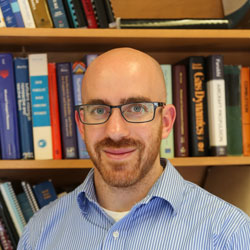 Professor Adam Steinberg (UTIAS) and his team study the complex physical and chemical processes taking place inside the combustion engines used in jet aircraft or large power plants. Adapting such engines to produce fewer emissions and use less fuel — or even to use biofuels — can compromise the stability of their operation, for example, by introducing vibrations that can damage engine components. Steinberg’s insights could help make low-emission engines safe enough to replace current models.
Professor Adam Steinberg (UTIAS) and his team study the complex physical and chemical processes taking place inside the combustion engines used in jet aircraft or large power plants. Adapting such engines to produce fewer emissions and use less fuel — or even to use biofuels — can compromise the stability of their operation, for example, by introducing vibrations that can damage engine components. Steinberg’s insights could help make low-emission engines safe enough to replace current models.
Cancer lab on a chip
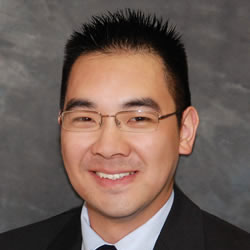 Cancer tumours form highly complex 3D environments involving many cell types. Yet much of our understanding of how cancer tumours develop has been based cells cultured in dishes that do not accurately replicate conditions in the body. Professor Edmond Young (MIE) and his team are using a combination of microengineering, microscale fluid flow, and microscopy to develop more representative 3D tissue models and better tools to study their growth. These tools will enable cancer biologists to address unresolved questions in our understanding of cancer.
Cancer tumours form highly complex 3D environments involving many cell types. Yet much of our understanding of how cancer tumours develop has been based cells cultured in dishes that do not accurately replicate conditions in the body. Professor Edmond Young (MIE) and his team are using a combination of microengineering, microscale fluid flow, and microscopy to develop more representative 3D tissue models and better tools to study their growth. These tools will enable cancer biologists to address unresolved questions in our understanding of cancer.
Simulating complex systems
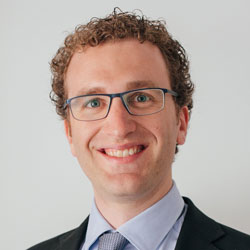 Professor Piero Triverio (ECE) and his team build mathematical models and algorithms that can address challenges in a wide range of complex systems. For example, their models are used to design the networks that deliver electricity to our cities, ensuring that they are resilient against power surges caused by lightning or faults. The team also uses models to prevent interference and optimize the exchange of information in electronic products such as smartphones and graphic cards. Recently, they began to apply their models to study how blood flows in diseased arteries in the human body in order to seek better treatments.
Professor Piero Triverio (ECE) and his team build mathematical models and algorithms that can address challenges in a wide range of complex systems. For example, their models are used to design the networks that deliver electricity to our cities, ensuring that they are resilient against power surges caused by lightning or faults. The team also uses models to prevent interference and optimize the exchange of information in electronic products such as smartphones and graphic cards. Recently, they began to apply their models to study how blood flows in diseased arteries in the human body in order to seek better treatments.

